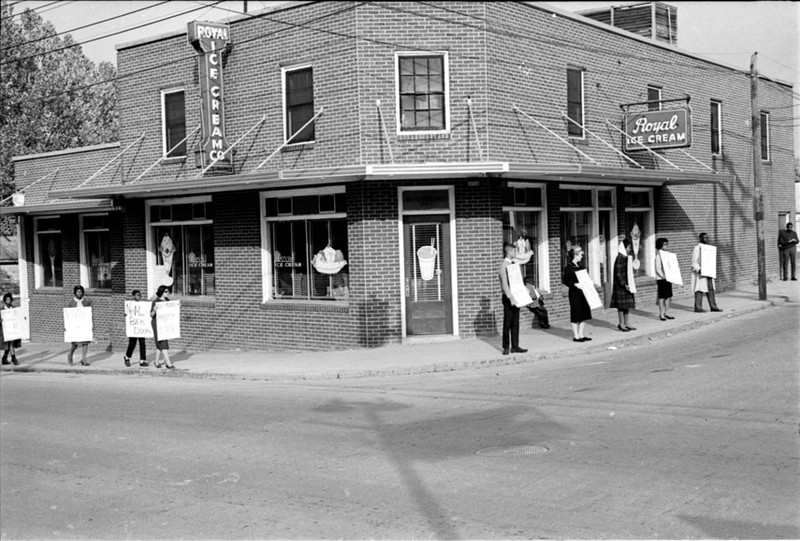Royal Ice Cream Sit-in
Introduction
Text-to-speech Audio
Images
Royal Ice Cream Parlor

Backstory and Context
Text-to-speech Audio
Reverend Douglass E. Moore was a Black pastor, who was very involved within the community actions against racial segregation. He had communicated with Martin Luther King Jr., and was inspired to motivate the community to do something about racial segregation. He used his church as a way to bring people together in order to organize non-violent protests including the Royal Ice Cream Sit-in. This sit-in and the method of protest used influenced a wave of other non-violent protests across the United States.
The sit-in at the Royal Ice Cream parlor took place after church on Sunday, June 23, 1957. The sit-in included Reverend Douglass, along with Virginia Williams, Claude Glenn, Jesse W. Gray, Vivian Jones, Melvin Willis, and Mary Clyburn. Known today as the “Royal Seven” the six participants were all members of Reverend Douglass’s church. They sat in the white section of the restaurant in protest, were refused service, and were arrested for trespassing. This sit-in is significant because they appealed the case which made it up to the State Supreme Court.
The group appealed the case which was heard by the county court, where the jury was all white, and they lost. The case made it all the way up to the State Supreme Court, where it also lost. The group tried to appeal their case to the United States Supreme Court, but their case would not be heard. This sit-in was very important because even though it lost in both courts, it indefinitely gave other movements around the United States inspiration to fight racial segregation.
